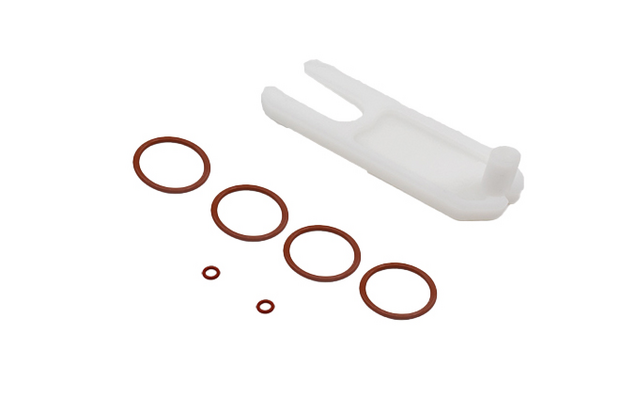PAL3-HS5000-Oring-kit

SH5000-65-T-23-SP
PAL3-HS5000-Syr-kit
PAL3-TH-HS5000
ASMS 2025 - From Sample to Species - Automated MALDI-TOF MS Workflows for Streamlined Bacterial Identification
Rapid and accurate bacterial identification is crucial in fields such as clinical diagnostics and food safety, yet traditional methods are often slow. MALDI-TOF MS offers apowerful alternative, but sample preparation is a bottleneck. We propose an automated workflow using a robotic platform to streamline this process. This automated MALDI-TOF MS workflow enhances bacterial identification by reducing manual steps and improvingstandardization across applications.
Automated Workflow for the determintation of Fatty Acid Methyl Esters (FAME)
This work presents a fully automated workflow using a workstation with robotic tool change (RTC based on a method using sodium methoxide in methanol as reactant .The workflow improves process safety, optimizes throughput and minimizes handling error.
Smart Sampling Enables a Fully Automated Workflow for Liquid Injection and Headspace GC and GC/MS
Applying the automated workflow described, the analyst’s time to prepare samples and standards, and then optimize conditions was drastically reduced when compared to performing the experiments manually without any reduction in accuracy and reproducibility. At the same time the automated procedure enabled complete traceability of every step.
Sample Preparation Compendium
Automated, Green, and Efficient
A Compendium on Micromethods in Analytical Sample Preparation
Discover robust, precise, and reliable analytical methods while following the principles of Green Analytical Chemistry in various fields such as Food & Food Safety, Environmental, Clinical, Life Science, and Chemical.
Automated Parallel Derivatization of Metabolites
For metabolite profiling chemical derivatization has been used to improve MS sensitivity and LC retention. However, for multi-analytes quantification, the number of available isotopically labelled internal standards is limited. And, there is no single workflow which can provide large-scale metabolomics coverage in particular for polar metabolites.
Presented by:
Prof. Gerard Hopfgartner, Life Sciences Mass Spectrometry, Department of Inorganic and Analytical Chemistry, University of Geneva
Headspace Analysis: Reproducibility of Syringe Headspace Injections for Aqueous Samples
This article describes the optimization of residual solvents analysis according USP <467> and Ph.Eur. 2.4.24 using the automated syringe headspace technique on GC-FID and GC-MS systems. The precision of analysis ranged from 4.3 to 7.8 % RSD (GC-FID) for class 2 solvents for all analytes investigated in this study. These values fully comply with USP <467> and Ph. Eur. 2.4.24 requirements.
Trace-level Volatile Organic Pollutants in Water
This application note demonstrates the analysis of tracelevel volatile organic compounds (VOCs) in water using
an automated headspace-trap GC/MS workflow.
• Ultra-low detection limits (ppt) for confident quantitation of VOCs.
• Exceptional linearity and precision for accurate and reliable results.
• High performance exceeding regulatory standards for water quality.
Automated MALDI-TOF MS Workflows for Streamlined Bacterial Identification
This application note demonstrates the successful automation of two sample preparation workflows, Formic Acid (FA) and Beads method, for bacterial identification using Matrix-Assisted Laser Desorption/Ionization Time-of-Flight Mass Spectrometry (MALDI-TOF MS).
